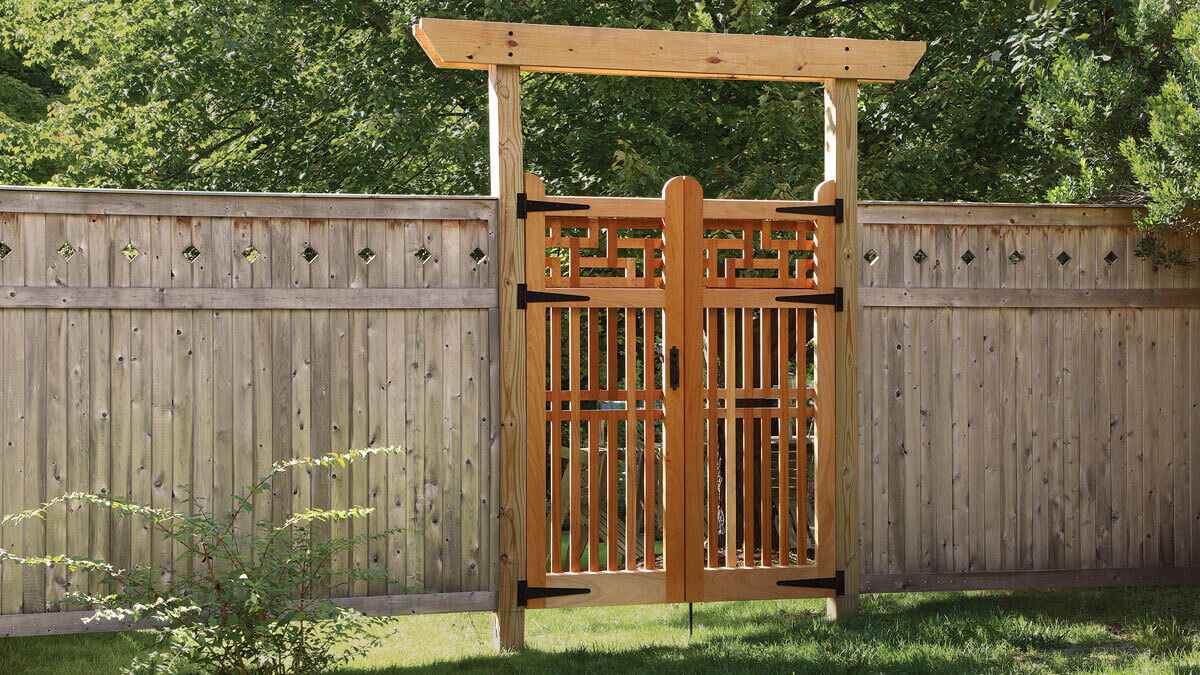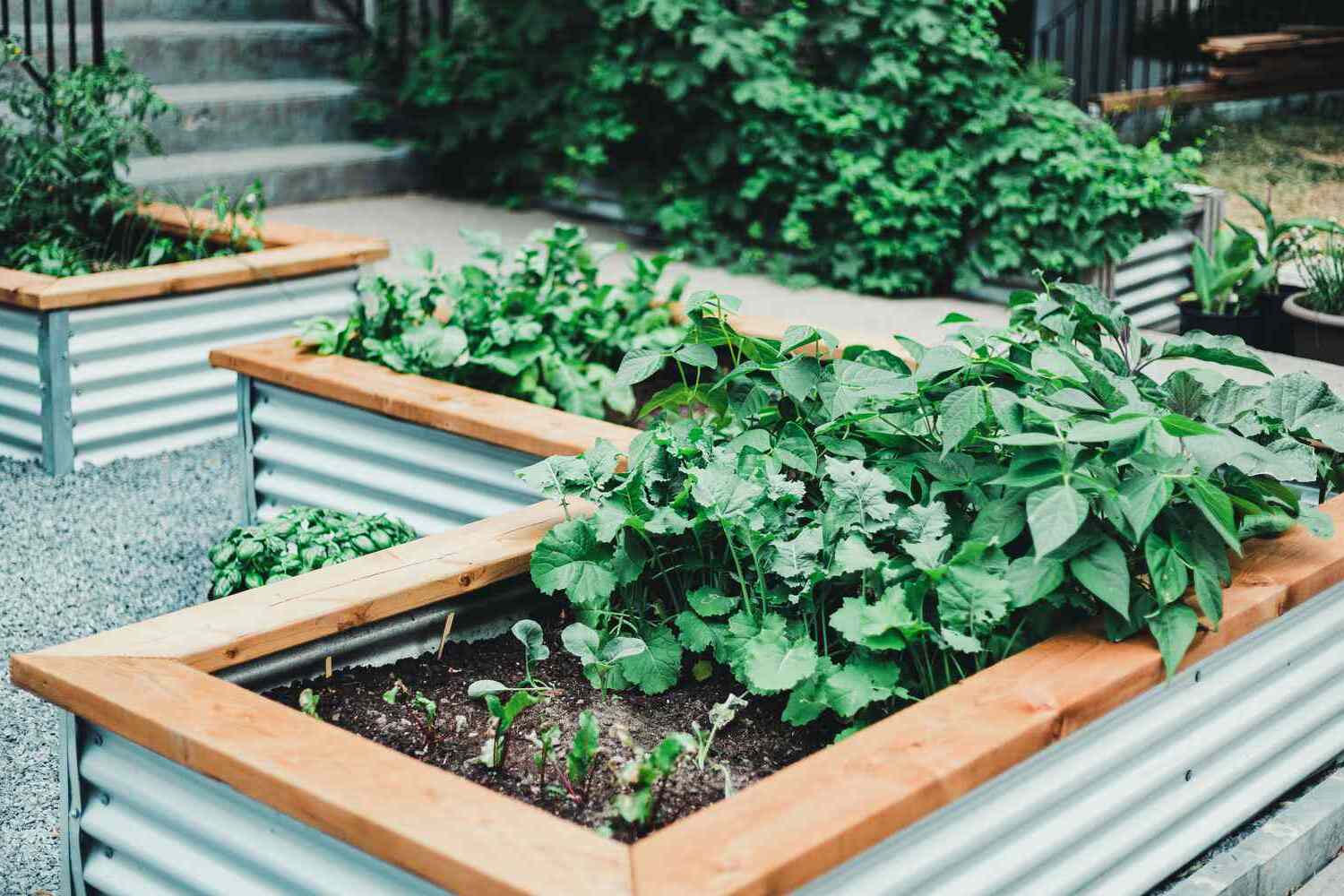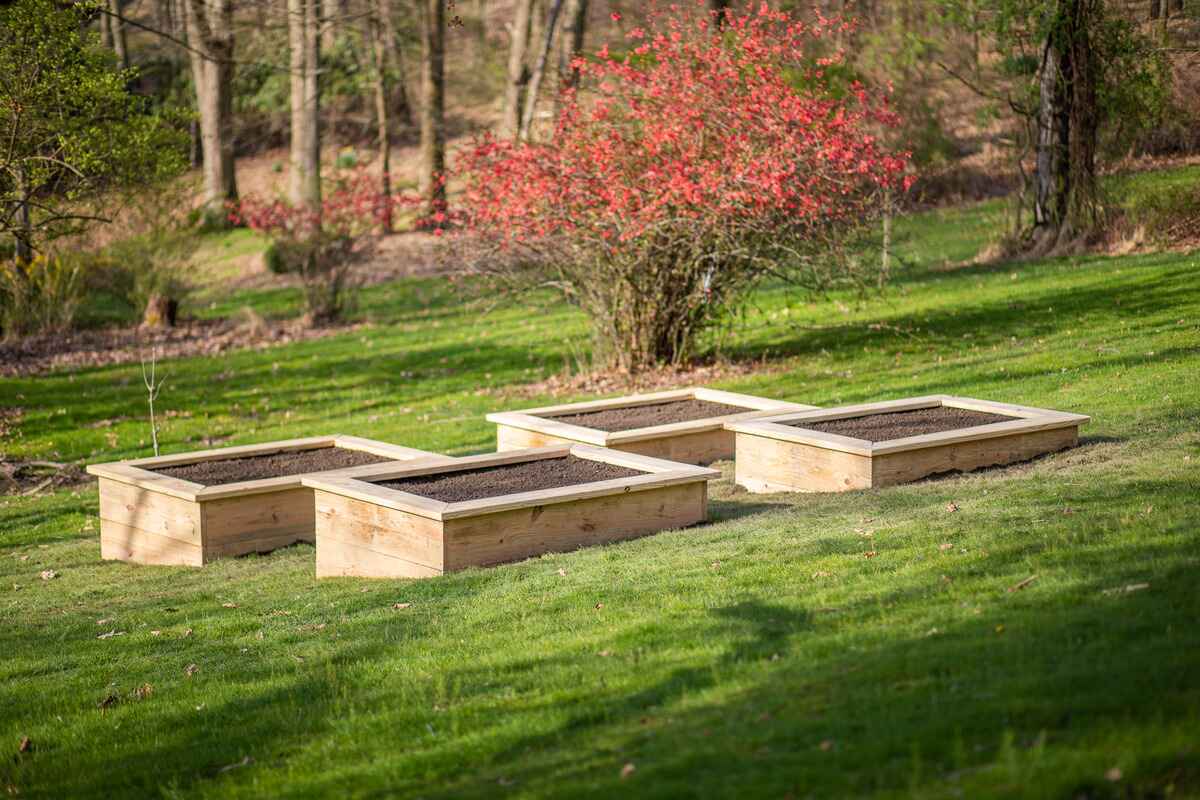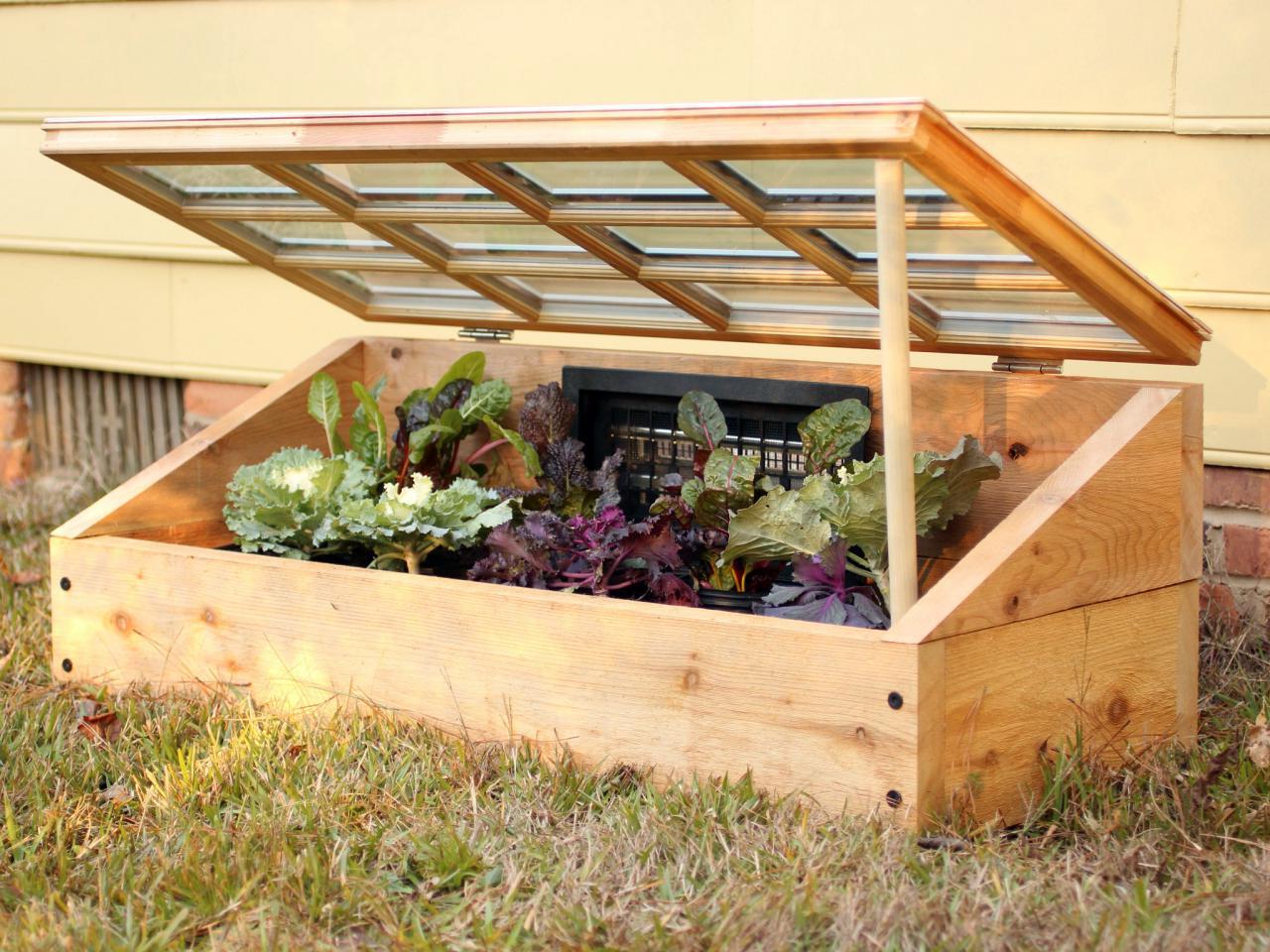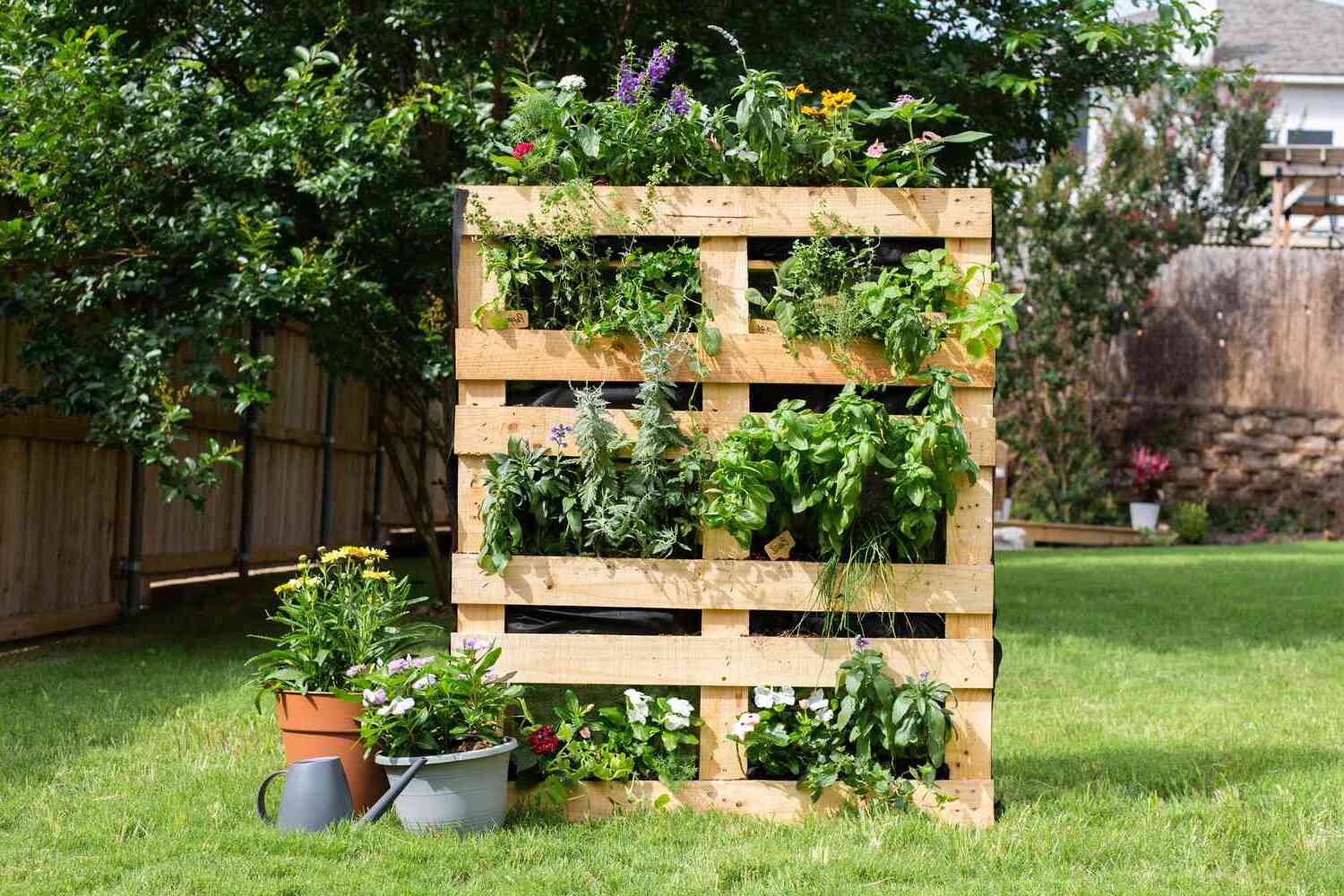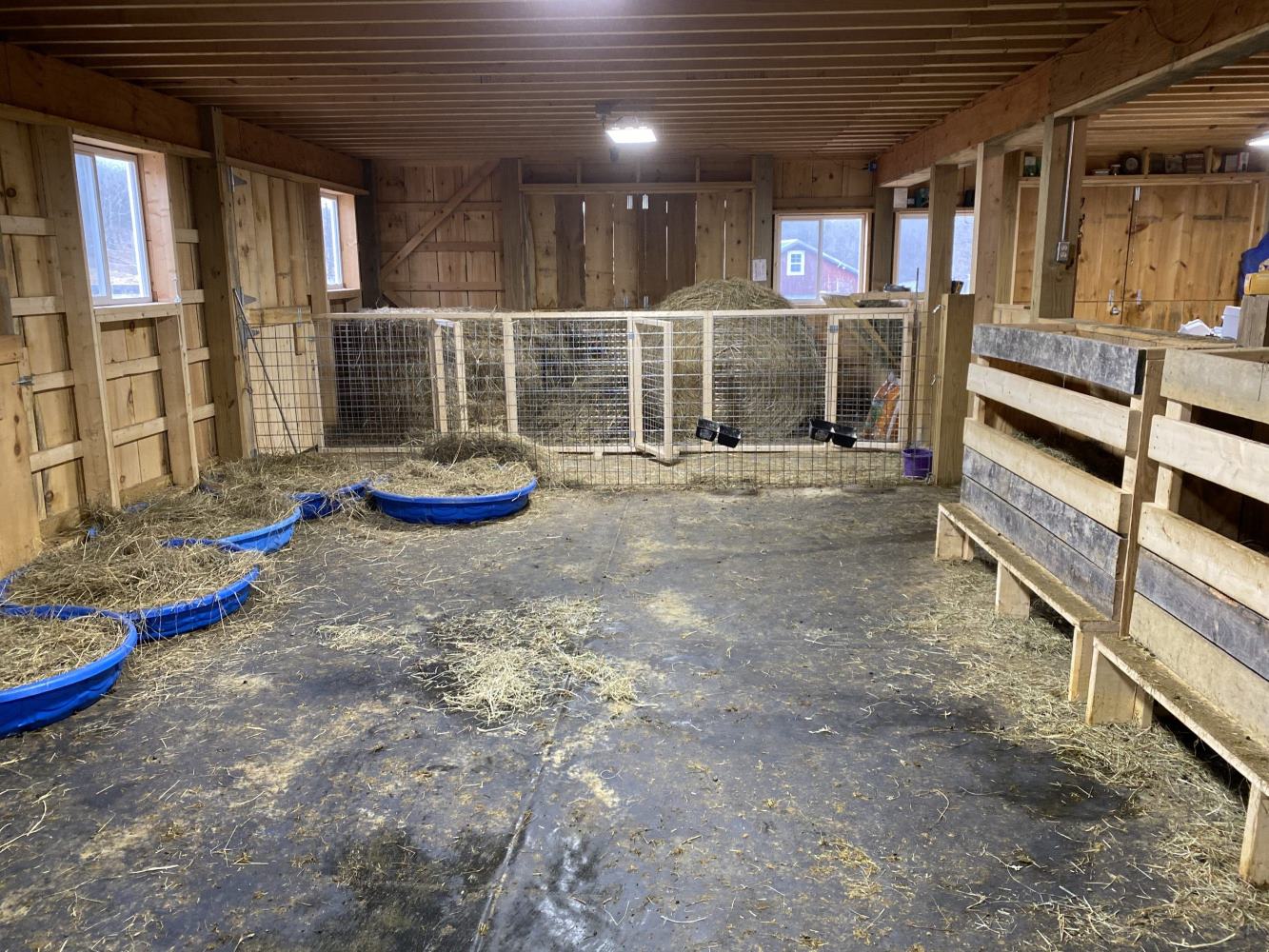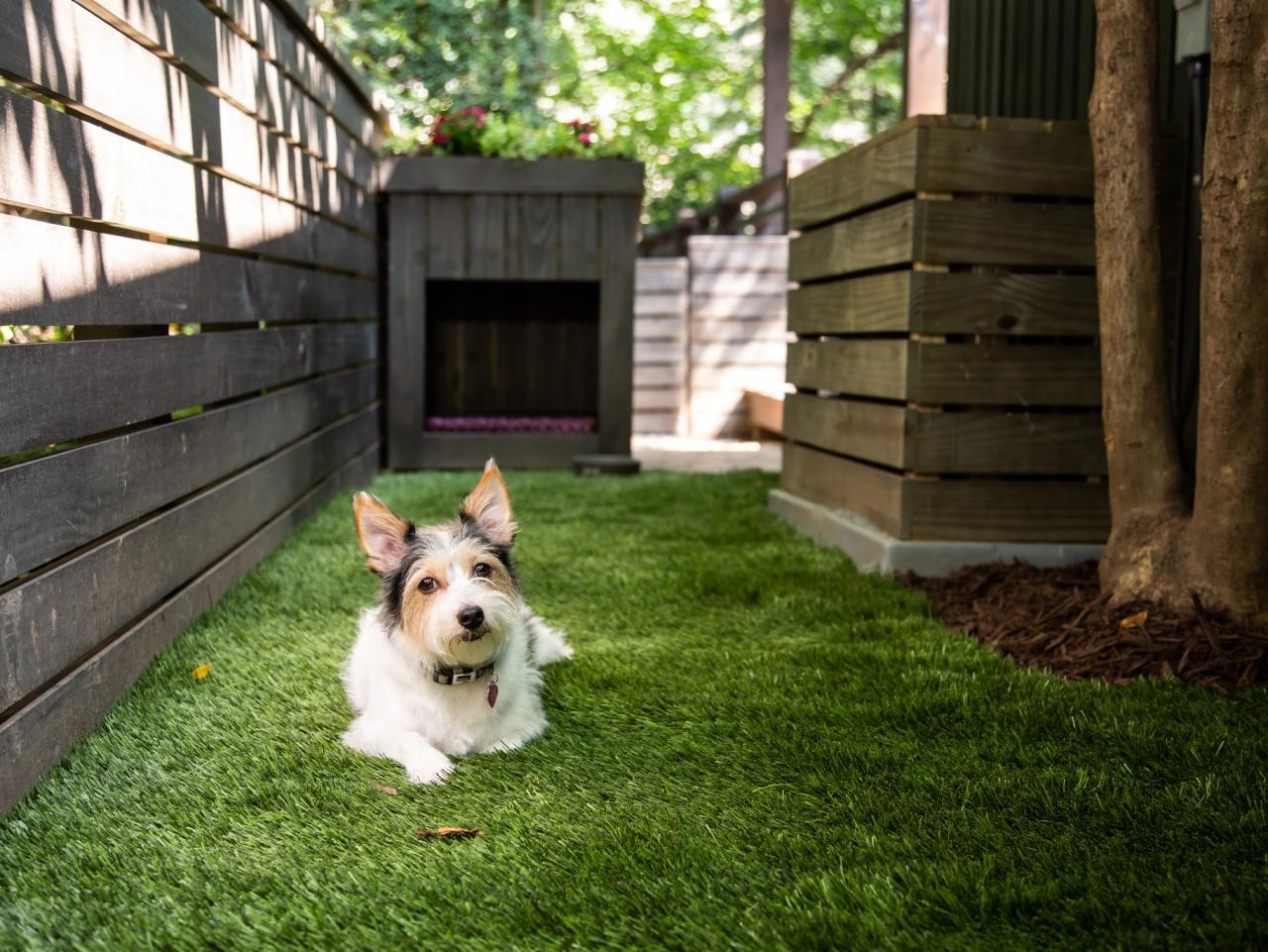Home>Create & Decorate>DIY & Crafts>DIY: Build A Trellis For Your Garden
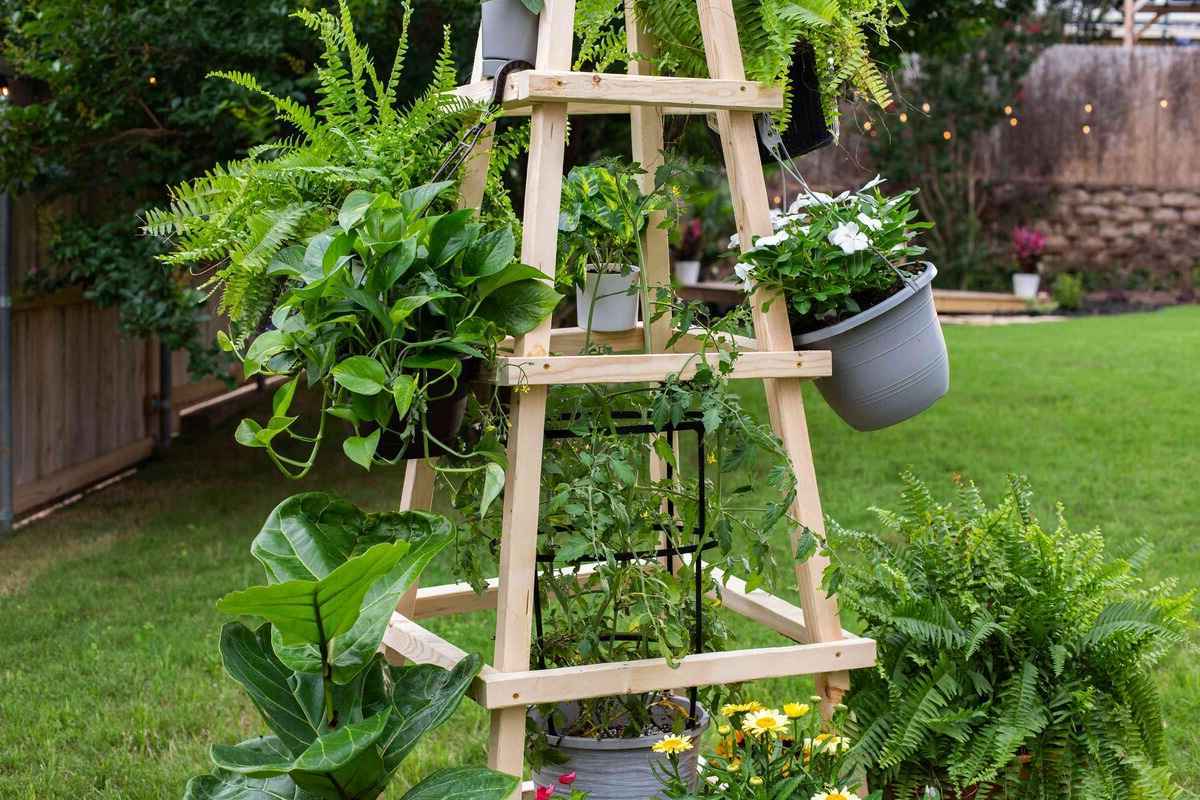

DIY & Crafts
DIY: Build A Trellis For Your Garden
Published: February 22, 2024

Senior Editor in Create & Decorate, Kathryn combines traditional craftsmanship with contemporary trends. Her background in textile design and commitment to sustainable crafts inspire both content and community.
Discover how to create a beautiful and functional garden trellis with our step-by-step DIY guide. Enhance your outdoor space with this easy and affordable craft project.
(Many of the links in this article redirect to a specific reviewed product. Your purchase of these products through affiliate links helps to generate commission for Twigandthistle.com, at no extra cost. Learn more)
Introduction
Are you looking to add a touch of charm and functionality to your garden? Building a trellis can be a rewarding and practical DIY project that not only enhances the aesthetic appeal of your outdoor space but also provides support for climbing plants such as roses, vines, and vegetables. Whether you're a seasoned DIY enthusiast or a novice looking to embark on your first woodworking venture, creating a trellis is a gratifying endeavor that allows you to unleash your creativity while adding a personal touch to your garden.
A trellis serves as a versatile structure that not only adds visual interest to your garden but also maximizes space by allowing plants to grow vertically. By incorporating a trellis into your garden design, you can transform an ordinary space into a captivating oasis, creating a picturesque backdrop for outdoor gatherings and leisurely moments of relaxation. Additionally, a well-crafted trellis can contribute to the overall health and vitality of your plants by providing them with the necessary support to thrive and flourish.
In this comprehensive guide, we will walk you through the step-by-step process of constructing a trellis for your garden, from gathering the essential materials to the final installation. Whether you envision a traditional wooden trellis or a modern, minimalist design, this guide will equip you with the knowledge and inspiration to bring your vision to life. So, roll up your sleeves, gather your tools, and let's embark on this fulfilling journey of creating a beautiful and functional trellis for your garden.
Materials Needed
Before diving into the construction process, it's essential to gather the necessary materials and tools to ensure a smooth and efficient building experience. Here's a comprehensive list of the items you'll need to construct a sturdy and visually appealing trellis for your garden:
Wood:
- Pressure-treated lumber: Opt for 2×4 or 4×4 lumber for the main frame to ensure durability and resistance to outdoor elements.
- Cedar or redwood boards: These are ideal for the crosspieces due to their natural resistance to decay and insects, adding longevity to your trellis.
Hardware and Fasteners:
- Galvanized screws or nails: Choose corrosion-resistant fasteners to secure the wooden components firmly.
- L-brackets: These will provide additional support at the joints, enhancing the structural integrity of the trellis.
Tools:
- Measuring tape and carpenter's square: Essential for accurate measurements and precise angles.
- Circular saw or miter saw: To cut the lumber to the desired lengths with precision.
- Drill and drill bits: For creating pilot holes and driving screws into the wood.
- Sanding block or electric sander: To smooth out rough edges and surfaces for a polished finish.
Optional Decorative Elements:
- Exterior wood stain or paint: Enhance the visual appeal and weather resistance of the trellis with a coat of your preferred color.
- Decorative finials or caps: Add a touch of elegance to the trellis by incorporating decorative elements at the top of the vertical posts.
Personal Protective Equipment (PPE):
- Safety goggles and gloves: Ensure your safety while cutting, drilling, and handling wood to prevent any potential injuries.
By ensuring that you have all the necessary materials and tools at your disposal, you can streamline the construction process and embark on this DIY project with confidence and enthusiasm. With the materials gathered, you're now ready to move on to the next step: measuring and cutting the wood to begin assembling the trellis frame.
Step 1: Measure and Cut the Wood
The initial phase of constructing a trellis involves precise measurements and accurate cuts to ensure that the wooden components fit together seamlessly, resulting in a sturdy and visually appealing structure. Here's a detailed walkthrough of the essential steps to measure and cut the wood for your trellis:
1.1 Determine the Dimensions
Begin by determining the desired dimensions of your trellis, taking into account the available space in your garden and the specific area where the trellis will be installed. Consider the height and width of the trellis, keeping in mind the potential growth of the climbing plants it will support. A typical trellis stands between 6 to 8 feet tall, providing ample vertical space for plants to thrive.
1.2 Mark and Measure the Lumber
Using a measuring tape and carpenter's square, mark the pressure-treated lumber according to the predetermined dimensions. Double-check the measurements to ensure accuracy before proceeding to the cutting phase. For the vertical posts, the 4×4 lumber can be cut to the desired height, while the 2×4 lumber will be used for the horizontal top and bottom rails.
1.3 Cut with Precision
Utilize a circular saw or miter saw to make precise cuts along the marked lines. Exercise caution and maintain a steady hand to achieve clean and accurate cuts, as these will directly impact the structural integrity and overall aesthetics of the trellis. Additionally, ensure that the ends of the lumber are cut at right angles to guarantee a flush and secure assembly.
1.4 Prepare the Crosspieces
Next, measure and cut the cedar or redwood boards to create the crosspieces that will be attached to the main frame. These crosspieces can be cut to the desired length, typically spanning the width of the trellis, and will provide the necessary support for the climbing plants. Smooth out any rough edges using a sanding block or electric sander to achieve a professional finish.
By meticulously measuring and cutting the wood with precision, you set the foundation for a well-constructed trellis that will not only enhance the visual appeal of your garden but also serve as a reliable support system for your beloved plants. With the wooden components prepared, you're now ready to progress to the next phase: assembling the frame of the trellis.
Step 2: Assemble the Frame
With the wooden components meticulously measured and cut to the desired dimensions, it's time to embark on the assembly phase, where the individual pieces will come together to form the sturdy framework of the trellis. This pivotal step lays the groundwork for the trellis's structural integrity and visual appeal, setting the stage for the subsequent installation in your garden. Here's a detailed walkthrough of the essential steps to assemble the frame of your trellis:
Read more: How To Build A Steam Room
2.1 Position the Vertical Posts
Begin by positioning the cut 4×4 pressure-treated lumber pieces as the vertical posts of the trellis. Place them parallel to each other, ensuring an even distance between the posts to accommodate the width of the trellis. Utilize a carpenter's square to verify that the posts are perfectly upright, as this will contribute to the overall stability of the trellis.
2.2 Attach the Top and Bottom Rails
Next, take the cut 2×4 pressure-treated lumber pieces and position them horizontally to serve as the top and bottom rails of the trellis frame. Align the rails with the tops and bottoms of the vertical posts, creating a rectangular framework. Secure the rails to the posts using galvanized screws or nails, ensuring a snug and durable connection at each joint. For added reinforcement, L-brackets can be utilized at the corners to enhance the structural stability of the frame.
2.3 Create the Grid Pattern
To further fortify the frame and provide additional support for climbing plants, consider incorporating a grid pattern using additional 2×4 lumber pieces. These can be positioned horizontally and vertically within the rectangular frame, forming a grid that will facilitate the upward growth of plants while adding a decorative element to the trellis. Secure the grid pieces in place using the same reliable fasteners, ensuring that they are evenly spaced and parallel to each other.
2.4 Finishing Touches
Once the frame is assembled, take a moment to inspect the connections and ensure that all components are securely fastened. Make any necessary adjustments to guarantee that the frame is level, stable, and ready for installation in your garden. Additionally, consider applying a protective coat of exterior wood stain or paint to safeguard the trellis against outdoor elements and enhance its visual appeal.
By meticulously following these steps, you will successfully assemble a robust and visually appealing frame for your trellis, laying the groundwork for a functional and aesthetically pleasing addition to your garden. With the frame assembled, you're now prepared to proceed to the next phase: attaching the crosspieces to complete the construction of the trellis.
Read more: How To Build A Putting Green In Backyard
Step 3: Attach the Crosspieces
With the sturdy frame of the trellis assembled, the next crucial step involves attaching the crosspieces that will provide essential support for climbing plants while adding a decorative flourish to the structure. This phase marks the transition from the foundational framework to the intricate details that will elevate the functionality and visual appeal of the trellis. Here's a detailed walkthrough of the essential steps to attach the crosspieces and complete the construction of the trellis:
3.1 Position the Crosspieces
Begin by positioning the pre-cut cedar or redwood boards horizontally within the rectangular frame of the trellis. These crosspieces will span the width of the trellis, providing a sturdy framework for climbing plants to thrive and ascend. Ensure that the crosspieces are evenly spaced and parallel to each other, creating a visually pleasing grid pattern that complements the overall design of the trellis.
3.2 Secure the Crosspieces
Using galvanized screws or nails, securely fasten the crosspieces to the vertical posts and horizontal rails of the trellis frame. Ensure that the connections are tight and reliable, as the crosspieces will bear the weight of the climbing plants and contribute to the overall stability of the trellis. For added reinforcement, consider utilizing L-brackets at the joints where the crosspieces intersect with the frame, enhancing the structural integrity of the trellis.
3.3 Create a Harmonious Design
As you attach the crosspieces, take the opportunity to step back and assess the visual symmetry and balance of the trellis. Ensure that the grid pattern formed by the crosspieces is aesthetically pleasing and complements the overall design of your garden. By maintaining uniform spacing and alignment, you can create a harmonious and visually appealing trellis that seamlessly integrates into its natural surroundings.
Read more: How To Build A Compost Bin
3.4 Finishing Touches
Once the crosspieces are securely attached, take a moment to inspect the trellis and make any necessary adjustments to ensure that all components are firmly in place. Smooth out any rough edges and apply a finishing coat of exterior wood stain or paint to enhance the trellis's visual appeal while providing protection against the elements. Consider adding decorative finials or caps to the tops of the vertical posts for a touch of elegance and refinement.
By meticulously following these steps, you will successfully attach the crosspieces, culminating in the completion of a well-constructed and visually captivating trellis. With the crosspieces in place, your trellis is now ready for the final phase: installation in your garden, where it will serve as a functional and ornamental centerpiece, supporting the growth of climbing plants and adding a touch of natural beauty to your outdoor space.
Step 4: Install the Trellis in Your Garden
With the trellis meticulously constructed, it's time to bring your vision to life by installing it in your garden. The installation phase marks the culmination of your hard work and creativity, as the trellis takes its place as a functional and visually captivating addition to your outdoor space. Here's a detailed guide on how to seamlessly install the trellis, ensuring its stability and harmonious integration into your garden landscape.
4.1 Choose the Ideal Location
Carefully select the location in your garden where the trellis will be installed. Consider factors such as sunlight exposure, prevailing wind direction, and the specific plants that will utilize the trellis for support. Ensure that the chosen spot allows for easy access and maintenance while complementing the overall aesthetics of your garden.
4.2 Prepare the Ground
Before installing the trellis, prepare the ground by clearing any debris and ensuring a level surface for stability. Use a shovel or garden rake to remove any obstructions and create a clean area where the trellis will stand. If necessary, consider using a spirit level to verify that the ground is even, providing a solid foundation for the trellis.
Read more: How To Build A Pond
4.3 Secure the Trellis
With the help of a friend or family member, carefully position the assembled trellis in the chosen location. Ensure that it stands upright and aligns with the surrounding landscape. Once positioned, use a post hole digger or a sturdy metal stake to anchor the vertical posts into the ground, providing additional stability and preventing any swaying or tilting.
4.4 Planting and Training
After the trellis is securely installed, it's time to introduce the climbing plants that will utilize it for support. Plant the selected vines, roses, or vegetables at the base of the trellis, allowing them to gradually ascend and intertwine with the crosspieces. As the plants grow, gently guide and train their tendrils onto the trellis, encouraging upward growth and creating a lush and vibrant display.
4.5 Finishing Touches
Once the trellis is installed and the plants are in place, take a moment to step back and admire the transformation it brings to your garden. Consider adding decorative elements such as potted plants or outdoor lighting to further enhance the visual appeal of the trellis area. Additionally, regularly inspect the trellis to ensure that it remains securely anchored and provide any necessary maintenance to support the healthy growth of the climbing plants.
By following these steps, you will successfully install the trellis in your garden, creating a captivating focal point that not only supports the growth of climbing plants but also adds a touch of natural beauty and charm to your outdoor sanctuary. With the trellis in place, you can look forward to a flourishing garden adorned with the graceful ascent of climbing plants, creating a picturesque backdrop for your outdoor enjoyment.
Conclusion
In conclusion, the process of building a trellis for your garden is a fulfilling journey that combines practicality with creativity, resulting in a visually captivating and functional addition to your outdoor space. By following the step-by-step guide outlined in this comprehensive DIY tutorial, you have gained the knowledge and confidence to embark on this rewarding project, from gathering the essential materials to installing the trellis in your garden.
As you reflect on the construction process, it's evident that a well-crafted trellis serves as more than just a structural support for climbing plants. It becomes a focal point that adds depth and character to your garden, creating an enchanting backdrop for outdoor gatherings and moments of relaxation. The trellis not only maximizes space by allowing plants to grow vertically but also contributes to the overall health and vitality of your garden by providing essential support for climbing flora.
Furthermore, the versatility of a trellis allows for personalization and adaptation to various garden styles, whether you prefer a traditional wooden trellis that exudes rustic charm or a modern, minimalist design that complements contemporary landscapes. The incorporation of decorative elements, such as exterior wood stain, paint, or ornamental finials, enables you to infuse your unique style into the trellis, transforming it into a reflection of your creativity and taste.
As you witness the climbing plants gracefully intertwining with the trellis, you'll experience the gratification of nurturing a thriving garden while enjoying the natural beauty it brings to your outdoor sanctuary. The trellis becomes a living showcase of nature's artistry, as vibrant blooms and lush foliage embellish its framework, creating a picturesque display that evolves with each passing season.
Ultimately, the completion of your trellis project marks the beginning of a new chapter in your garden's story, where the trellis stands as a testament to your craftsmanship and dedication to cultivating a vibrant and inviting outdoor space. As you savor the tranquil moments spent in the presence of your flourishing garden, the trellis will continue to serve as a timeless symbol of growth, beauty, and the harmonious coexistence of nature and human creativity.
In essence, the journey of building a trellis transcends the realm of DIY craftsmanship, evolving into a profound expression of your connection to nature and the joy of nurturing a living, breathing garden. With the trellis as a centerpiece, your garden becomes a canvas where the beauty of the natural world intertwines with your passion for creativity, resulting in a harmonious tapestry that enriches your daily life and inspires moments of awe and tranquility.

